Located in the western part of Anatolia, Afyonkarahisar is a city with a significant place in the history and geography of Turkey.
History Of Afyonkarahisar
It has been a crossroads for travelers from various directions throughout history and was settled by many civilizations, including the Phrygians, Lydians, Romans, Byzantines, Seljuks, and Ottomans.
Due to its long name, the city is often referred to as “Afyon” by many official and commercial organizations. Afyonkarahisar played a crucial role in the National Resistance and War of Independence, being the starting point of Mustafa Kemal’s “Great March” and the site of the Great Offensive.
Afyonkarahisar’s historical importance and geographic location make it a prominent region in Turkey. Its tourism potential has improved due to the development of thermal and healthcare sectors, with many thermal springs and geothermal resources in the area. Visitors can enjoy warm waters that are beneficial for treating various ailments at the city’s spas and hotels.
Aside from its natural resources and cultural heritage, Afyonkarahisar is also known for its regional cuisine, including clotted cream, sausage, Turkish delight, and confectionery.
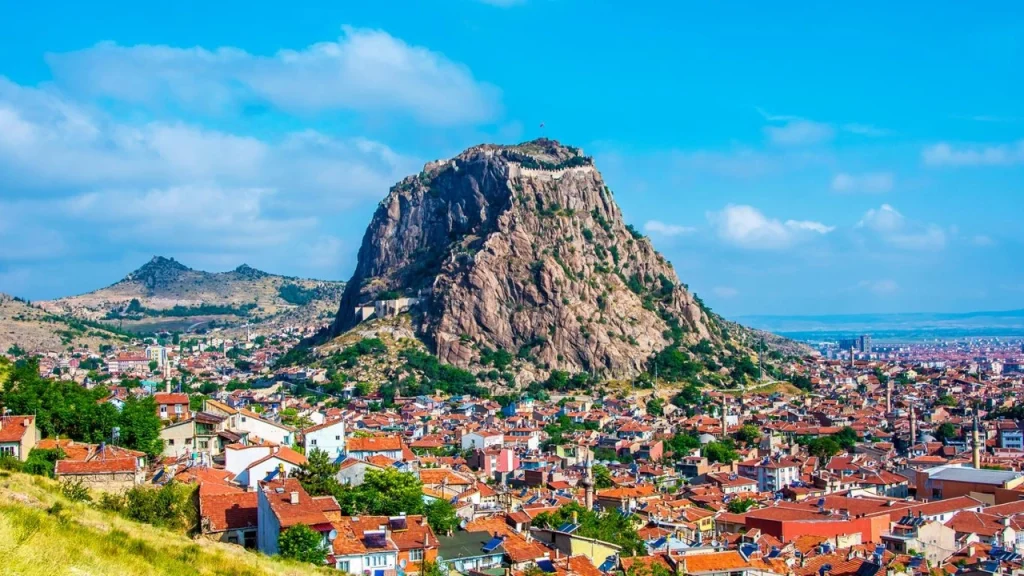
Places to Visit Afyonkarahisar
Karahisar Castle
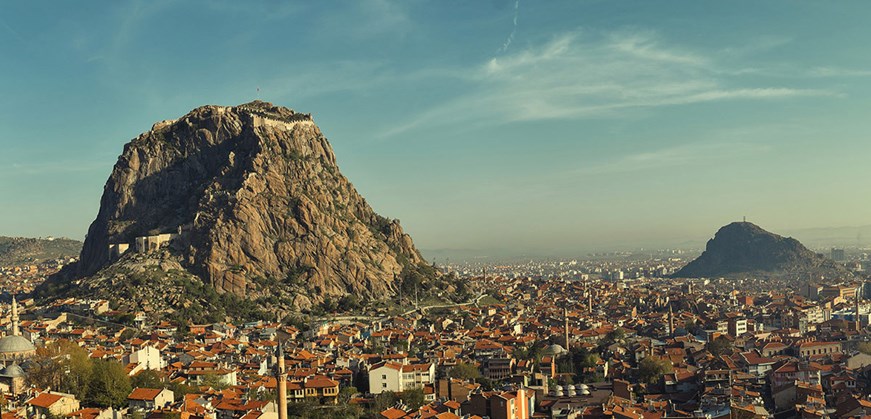
The Karahisar Castle, located within the protected area of Afyonkarahisar’s city center, is closely tied to the origin of the city’s name. Construction of the castle began approximately in 1350 AD with the purpose of housing the Ottoman treasury, offering breathtaking views and reaching a height of 226 meters.
Visitors can admire Phrygian artifacts and statues dedicated to the Mother Goddess Kybele at the castle’s summit. During the reign of Alaaddin Keykubat Seljuk Sultan, the castle’s walls were repaired, and a mosque was constructed in the vicinity. Additionally, visitors can also spot the ancient Maidens Tower nearby.
The Karahisar Castle has become a significant location for locals to express their wishes for upcoming events. It has been a tradition for those who want to get married to shout from the Maiden Tower, saying “O my faith, my faith, O my golden throne! It is time for me to get married!” Similarly, the castle is also a place where people express their desire to have a child.
According to local beliefs, visiting the Karahisar Castle will result in being “stuck” in Afyonkarahisar for seven years. Therefore, it is a common practice among locals to make wishes from the castle for good fortune, as it is believed that these wishes will be granted if made with sincerity.
Afyon Ulu Mosque
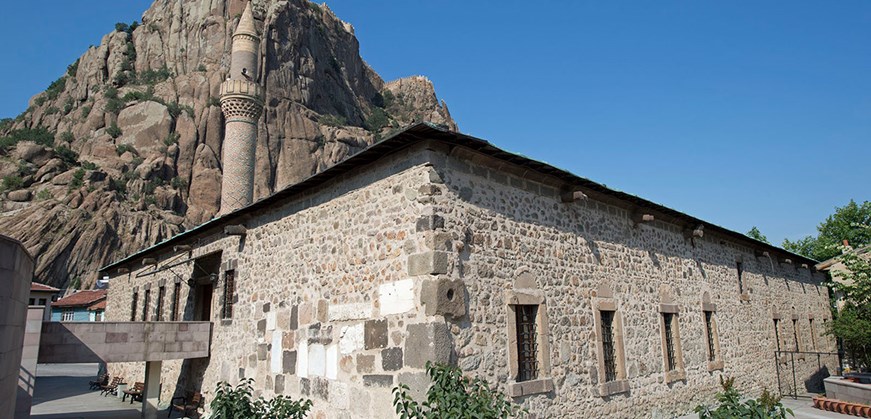
The Afyon Ulu Mosque, a Seljuk mosque featuring wooden architecture, is one of the oldest surviving Seljuk mosques. It is situated in the Çavuşbaş neighborhood and boasts a glazed brick minaret.
The mosque was constructed between 1272-1277 by Nasuriddin Hasan, the son of Seljuk Vizier Fahreddin Sahib Ata. Its interior features forty wooden columns arranged in eight rows, and the ceiling is adorned with stalactite header. The mihrab, which is a simple Seljuk stone work, has three gates facing east, west, and north respectively. Verses from the Quran, specifically “Ayat el Kursi”, are inscribed on the mihrab.
The wooden pulpit of the mosque is intricately carved with geometric tracery and is decorated with rich colors of natural plant dyes. The original wooden pulpit’s door bears an inscription crediting its construction to Emir Neccar Hacı Bey. Floral and geometric motifs are painted on the pulpit’s beams, adding to the mosque’s overall aesthetic beauty.
Phrygian Valleys
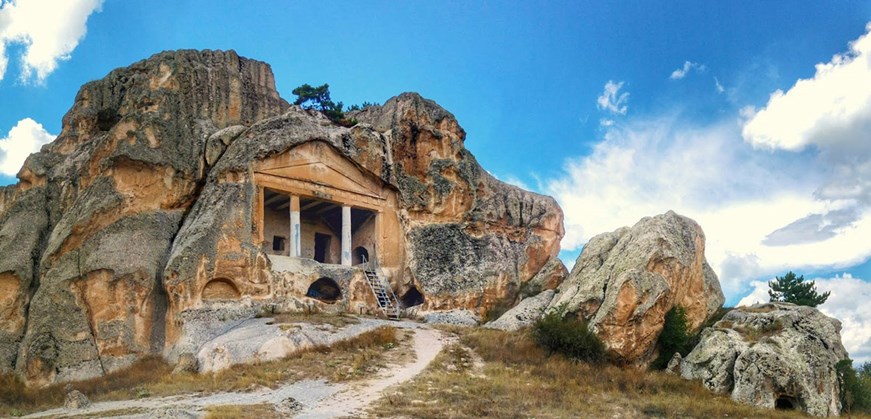
Around 750 BCE, the Phrygians emerged as a powerful tribe, gaining political supremacy in the region. The Hittite Empire’s decline around 1200 years ago led to migration from the western lands.
The Phrygian Valley is a magnificent region distinguished by its natural beauty and vastness. It is home to canals, rock formations, ancient ruins, open-air temples, fairy chimneys, and a rich history spanning three thousand years. The Phrygians left a lasting cultural legacy in the region between Afyonkarahisar and Eskisehir-Kütahya. Their artistic creations, such as temple facades depicting the Mother Goddess Kybele Cult, are noteworthy for their embossed lion reliefs, carved from large rock blocks. These works bear testimony to the Phrygians’ creativity and valuable contributions to the region’s cultural heritage.
The Phrygian Valley is home to several significant rock-cut monuments, including Aslantaş and Yılantaş, located in the north of Afyonkarahisar. Another important monument is Maltaş, situated in İhsaniye District’s Göynüş Valley. Additionally, Kapıkaya I and II are located near Döğer town.
The valley’s must-see attractions include Aslankaya, Kapıkaya 1-2, and Maltaş open-air temples, Ayazini ruins, and Yedikapılar. The Memeç rock settlements, Avdalaz and Bayramaliler castles, and other historical sites like Kırkinler, Seyildi fairy chimneys, Ağın rock settlement, Ornaş rock settlement, and Selimiye Rock tombs are also of great cultural and historical significance. Visitors to the Phrygian Valley are treated to a wealth of archaeological treasures and stunning natural landscapes.
Ayazini Village & Ruins
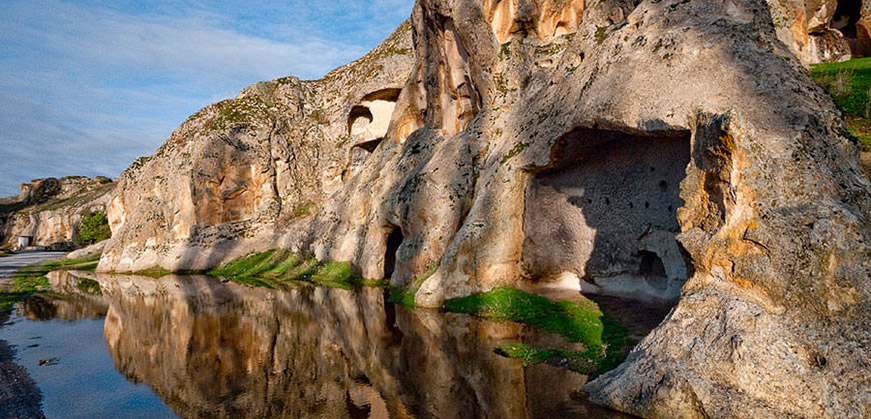
Ayazini Village is a historic settlement that traces its origins back to the Phrygian era. The region boasts an array of impressive architectural achievements, including family and single-person rock-cut tombs from the Roman and Byzantine periods, as well as Byzantine-era churches that showcase intricate carvings.
Visitors to the area can marvel at a range of well-preserved architectural marvels, including standing lion sculptures found in one of the grave chambers, as well as columns from another tomb chamber. Of particular note is the Avdalaz Castle, which features an entire church that has been carved out of rock, complete with exquisite exterior and interior architecture. However, caution should be exercised when exploring the various beautifully sculpted cisterns dotted throughout the city.
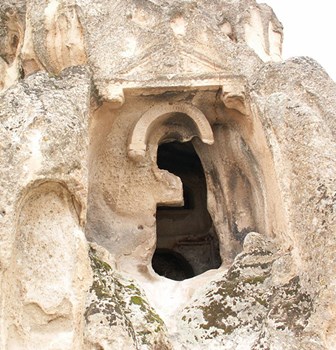
Ayazini, known as the heart of Phrygia, hosts tourism festivals every year. With plans for the development of a new tourist attraction called the “Ayazini Village Tourist Reception Centre,” the village is expected to become a major destination for visitors.
One of the unique features of the area is the Ayazini Rock Houses, which were initially carved into the tuff rock formations during the Early Byzantine Period. Some of these houses consist of single rooms, while others are carved side by side or separately. Access to some of the houses is via steps, while others can only be reached through tunnel-like passages inside the homes.
The Ayazini Rock Tombs are another remarkable feature of the region. These family and single-person rock-cut tombs date back to the Roman and Byzantine periods, with some of them being double floors. The proximity of the cemetery of Ayazini Town to the rock tombs suggests that people preferred this area for burial purposes.
The entrance to the grave chambers is decorated with a relief sculpture of the Medusa head. After passing through the entrance, visitors will find an ante-chamber that leads to arched spaces containing cist graves. These graves are adorned with various decorations such as lion sculptures and reliefs depicting couples.
The Ayazini church, also known as Ayazini kilisesi, is a remarkable stone-carved church built into the steep tuff rock face of Ayazini Town. It can be seen upon entering the town, featuring an exterior facade with an apse and dome carved out of the rock face. The church is believed to have been constructed around 1000 AD, with adjoining chambers also cut from stone.
Archaeology Museum
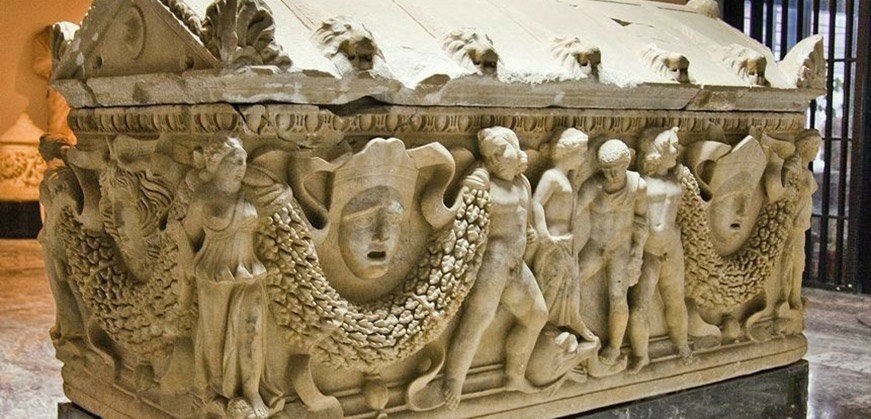
In the early years of the Turkish Republic, the Asar-ı Atika Muhipleri Cemiyeti (Association for Ancient Monuments) played a significant role in preserving historic sites and artifacts. As part of their efforts, the Gedik Ahmet Pasha School, also known as Taş Madrasa, was repurposed as a storage facility for old works.
The town association’s leader, Süleyman Gönçer, was appointed to oversee the school’s transformation into an official warehouse in 1931. Under Mr. Gönçer’s guidance, the former school was expanded to include local institutions and a community center. In 1933, the 10th year of the Republic, the site was opened as a museum, with Süleyman Gönçer assuming the role of head. Today, the museum stands as a testament to the efforts of those who worked to protect and promote Turkey’s rich cultural heritage.
Originally established as a mixed museum in 1933, the Afyon Museum was relocated to a new building on the premises of the Museum Directorate and Archaeology Museum in 1970. Meanwhile, the Gedik Ahmet Pasha School, which had served as a warehouse for stone works and ethnographic artifacts from 1971 to 1995, was transformed into a museum after undergoing restoration and arrangement between 1978 and 1994.
Unfortunately, the building has been closed since 1996 due to difficulties in preventing humidity from damaging the monuments, and the artifacts are now stored at the Directorate headquarters. However, plans are being made for a future exhibition.
The Archaeology Museum boasts a rich collection of artifacts from different historical periods, including statues and coins from the Bronze, Hittite, Phrygian, Lydia, Hellenistic, Roman, and Byzantine eras. These relics provide valuable insights into the region’s past and offer visitors a glimpse into the diverse cultures that have shaped Afyon’s history.
The Victory Museum
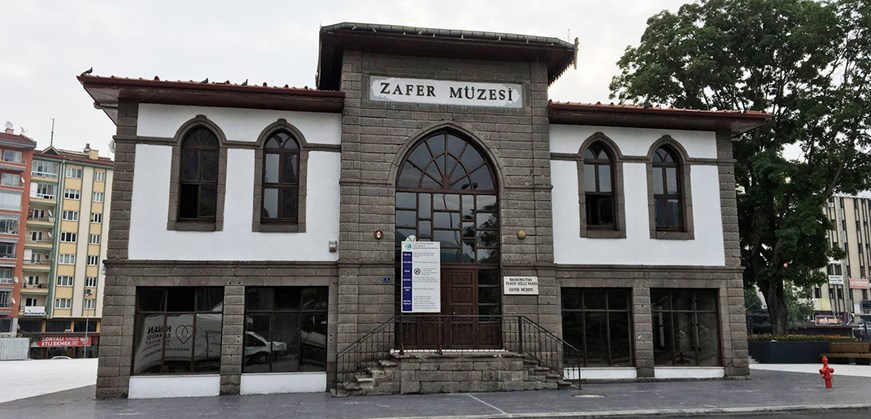
Located on Victory Monument Street, across from Afyonkarahisar Castle, the Victory Museum is a neo-classical building completed in 1920 by Mehmet Sait Efendi. It is notable for its historic significance as the site where the “Battle of Dumlupınar,” also known as the Field Battle of the Commander-in-Chief, was planned and ordered.
The museum’s main focus is on the “Field Battle of the Commander-in-Chief,” and it houses exhibits that pay tribute to the bravery and accomplishments of commander Mustafa Kemal Pasha, Western Front Commander İsmet İnönü Pasha, Chief of General Staff Fevzi Çakmak Pasha, and Western Front Operations Branch Director Tevfik Bıyıkoğlu. Visitors can learn about the strategies and tactics used in this pivotal battle and gain a deeper understanding of its significance in Turkish history. The building’s neo-classical features also add to its architectural appeal and cultural value.
Bolvadin Museum
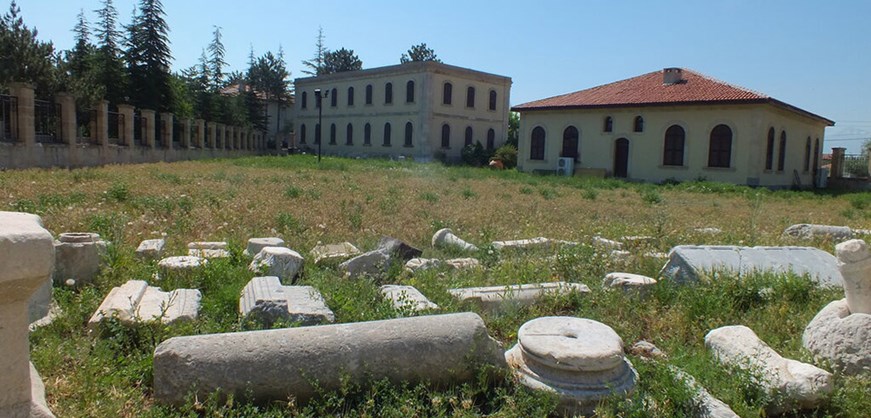
Located approximately 50 kilometers from the center of Afyonkarahisar, Bolvadin has a rich history dating back to ancient times. Originally part of Phrygia, the city was known as Polybotum during the Roman era and featured a castle built during this time. Later on, it came under the rule of the Seljuk Turks and eventually became part of the Ottoman Empire, serving as a strategic bridge in the mountains.
Thanks to the dedicated efforts of Muharrem Bayar to educate students at Bolvadin Lise, a significant collection of artifacts was amassed. As the collection grew, it became clear that a museum was needed to properly preserve and display these works. Today, visitors can explore the Bolvadin Museum and learn more about the city’s history and cultural heritage, which includes its Phrygian, Roman, Seljuk, and Ottoman roots.
Originally established in 1987 after the renovation of the Municipal Cinema, the Bolvadin Museum underwent a major transformation in 2008 when it moved to Yanık Barracks. Today, the museum serves as a comprehensive tribute to the rich history of Bolvadin.
Visitors to the museum can view over 1,000 artifacts spanning various historical periods, including items from the Old Bronze Age, as well as Roman, Byzantine, Seljuk, Ottoman, and Republican periods. Among the museum’s most noteworthy features are exhibits showcasing traditional Bolvadin crafts such as soft cream making, wickerwork, and handicraft.
The museum is spread across two floors, with the ground level housing exhibits such as a Bolvadin-style living room, bridal room, conference hall, and exhibition hall. Upstairs, visitors can explore an additional exhibition hall and library. With its extensive collection and diverse exhibits, the Bolvadin Museum provides a unique and fascinating glimpse into the region’s rich cultural heritage.
Ismail Kumartaşlı Egg and Arts Centre
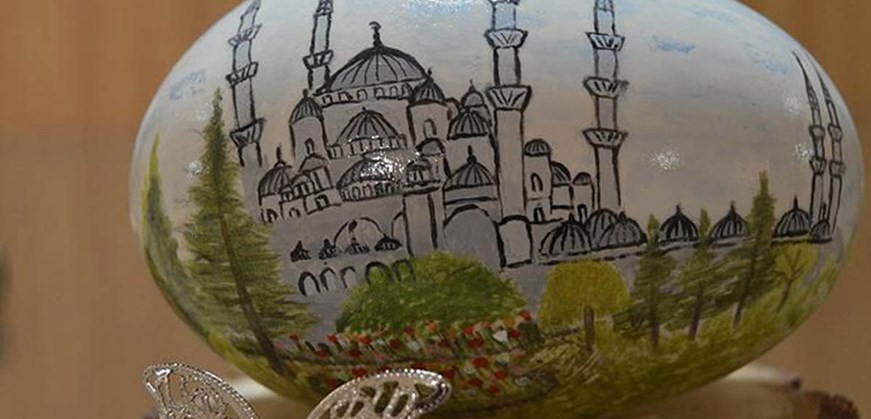
The “Afyonkarahisar İsmail Kumartaşlı Egg and Arts Centre” showcases a wide variety of eggs from different animal species as well as egg-themed artworks. Meanwhile, the “Afyonkarahisar Hattat Ahmet Karahisari Center for Culture and Arts” houses the world’s 6th and Turkey’s first egg art museum.
The center serves as both a museum and a promotional center for the egg industry. Visitors can marvel at eggs from 240 different species, collected by 37 producers from 22 cities across Turkey. Additionally, the center boasts around 100 creatively crafted real eggs, including those from wild animals such as sharks, loggerhead sea turtles, snakes, and locusts.
Moreover, the center features records and documents related to the Turkish poultry and egg production sector. It is worth noting that all the eggs on display were obtained from dead embryos and not live ones, as the center was established before the potential harm of such practices was realized. The center offers a fascinating and unique experience for visitors.
Sultan Divani Mevlevihanesi
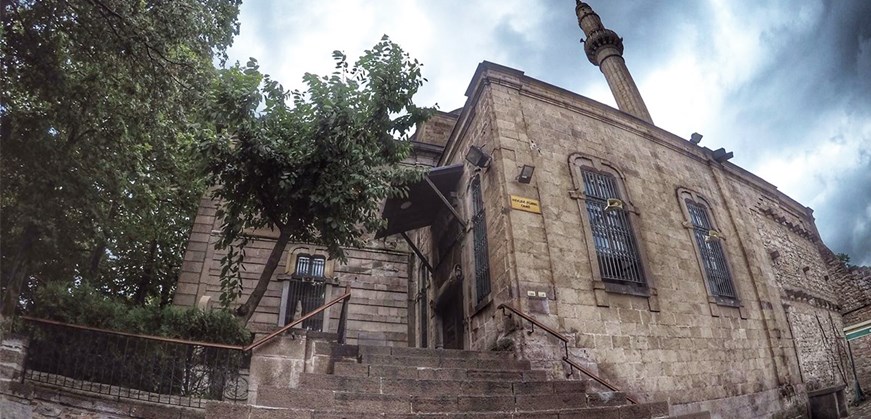
The Sultan Divani Mevlevihanesi is a Mevlevi lodge in Anatolia that dates back to the 13th century and is considered one of the most important after the Konya Mevlevihanesi. Sultan Divani, one of the grandchildren of Mevlana in the 7th generation, built the lodge in the 16th century, which became a religious center for the Mevlevi order.
The lodge has played a central role in activities related to the Mawlawiyya, with its cells where the dervishes seclude themselves for 1001 days and tombs that are visited on tours.
What makes the Sultan Divani Mevlevihane significant is its practice of the Ashura tradition, which consists of 40 recitations of the Qur’an (hatim). Every year on the 10th day of Muharram, Ashura ceremonies are performed in 40 cauldrons with recitations from the Qur’an. At the end of the ritual, the dessert of fasting is distributed to people which is made specifically for this event during that day.
Amorium Ancient City
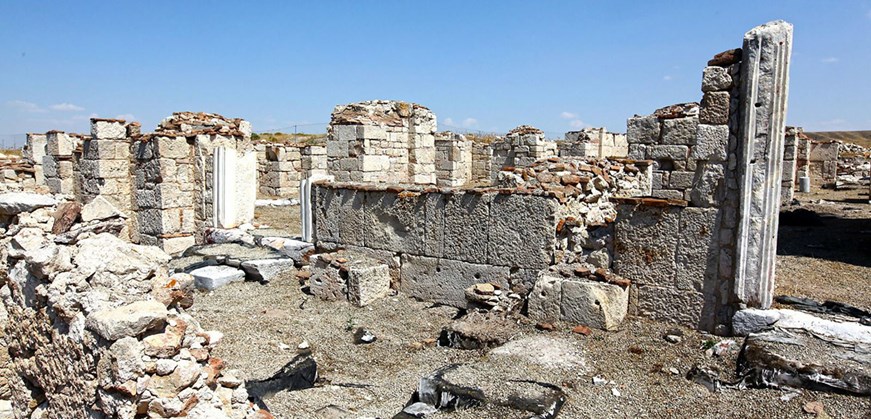
The ancient city of Amorium has a history dating back 2,000 years, and has been inhabited by various civilizations such as the Phrygians, Romans, Byzantines, Seljuks, and Ottomans. The city is divided into an upper and lower section, located 70 kilometers north of Afyonkarahisar, with a distance of 13 kilometers east of the now defunct Emirdağ District.
Amorium played a significant role during the Classical and Hellenistic periods, and was among the first cities permitted to issue its own currency, signifying its importance in Eastern Phrygia during the early 1st century BCE. It was also a prominent commercial center that attracted many people with regular festivals and fairs throughout Late Antiquity.
Amorium Ancient City has a rich history connected to several notable figures. According to ancient records, writers such as Aesop are thought to have lived there.
One of the most significant religious figures in Islam, Salman the Persian, visited Amorium in search of spiritual truth. He had grown up near the city and studied with a group of Christians there until he was 45 years old, when he traveled to Medina to meet Mohammed. After converting to Islam, he earned the title “He is of my family” from Muhammad for his valuable contributions to Islam and humanity. Additionally, it is believed that Battal Gazi, who played an important role in the Islamization of Anatolia, died near Afyonkarahisar while possibly participating in the siege of Amorium. His final resting place is the Seyitgazi Tomb, located about 100 km from Amorium.












